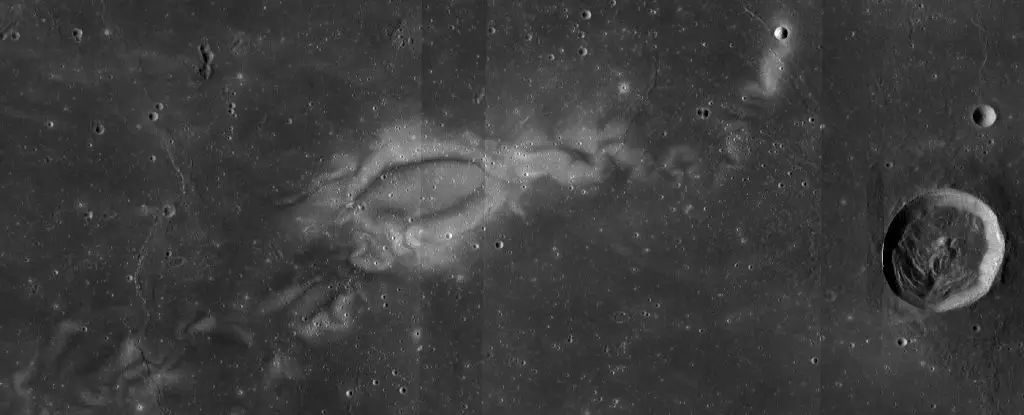The enigmatic lunar swirls that adorn the surface of the Moon have long puzzled scientists. However, recent findings suggest a potential link between these swirling patterns and changes in lunar topography. This revelation brings researchers closer to unraveling the origins of these captivating features that have defied explanation. Planetary scientist John Weirich of the Planetary Science Institute explains, “The canonical interpretation of lunar swirls is that topography has no bearing on the location or shape of the swirl. However, Domingue et al. found the bright areas of the lunar swirl in Mare Ingenii have a lower elevation than the dark lanes between them, shedding new light on the connection between surface shape and swirl formation.”
The Mystique of Lunar Swirls
Lunar swirls, as their name implies, are swirling patterns that grace the Moon’s surface, both in the dark mare and the bright highlands. These intricate designs consist of bright curling lines interwoven with darker gaps. Although many questions about them remain unanswered, scientists have made some notable discoveries. Every known lunar swirl corresponds to a magnetic field over the lunar surface, which deflects solar particles and safeguards the swirls from space weathering. Furthermore, there seems to be a correlation between lunar swirls and hidden lava tubes beneath them.
Previously, it was believed that there was no connection between the shape of the lunar surface and the formation of swirls. However, the groundbreaking work of planetary scientist Deborah Domingue and her team challenged this assumption. In their investigation of a swirl in Mare Ingenii, they observed that the bright lines were lower than the surrounding darker lanes by around 2 to 3 meters (6.6 to 9.8 feet). To test the validity of this link, Weirich and his colleagues embarked on a study of another renowned lunar swirl called Reiner Gamma. Employing data from the Lunar Reconnaissance Orbiter Camera, they utilized advanced techniques including machine learning to derive high-resolution topographic data for the surface. Their results echoed the earlier findings, revealing that the bright areas of Reiner Gamma are approximately 4 meters (13 feet) lower than the dark areas.
While the discovery of elevation changes in two lunar swirls suggests a pattern rather than mere coincidence, numerous nuances remain to be explored. Weirich notes, “However, it is not as simple as the bright areas being uniformly lower than the dark areas. If that was the case, this relationship between topography and swirls would be easy to demonstrate. Instead, this relationship is only evident when comparing the average height of the bright areas and the average height of the dark areas.” It becomes apparent that a more comprehensive understanding will require studying additional lunar swirls to grasp the intricacies of their formation.
Unlocking Lunar Secrets
Although the newfound correlation between lunar topography and swirls offers valuable insight, the ultimate cause behind their formation remains elusive. Nevertheless, every piece of information gathered brings scientists closer to deciphering these mysterious features. Since there is no comparable phenomenon on Earth, unraveling the secrets of lunar swirls holds the promise of providing unique insights into the Moon’s history and its enigmatic subterranean activities. Weirich explains, “There are many hypotheses about their formation process. Each hypothesis has observations that support it, but there are also other observations that contradict them. Since we don’t have a full understanding of how these swirls formed, we don’t completely comprehend the story they can tell us about the Moon. Their formation could involve a combination of well-understood processes interacting or an as yet unknown process.”
Recent investigations into the relationship between lunar topography and the formation of these captivating lunar swirls have opened up new avenues of exploration. While the mystery surrounding their origins persists, scientists remain dedicated to decoding their secrets. As they delve deeper into the complexity of lunar swirls, our understanding of the Moon’s history and geology will undoubtedly be enriched.


Leave a Reply